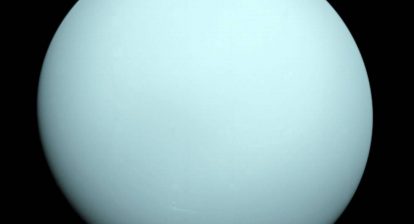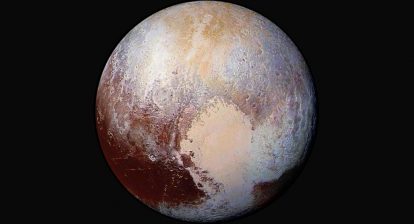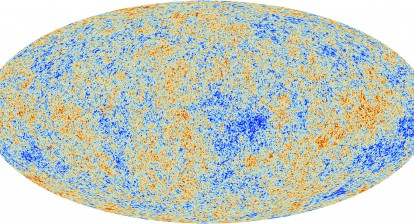Hubble finds long term presence of water vapour on Jupiter’s moon Europa
Europa is the smallest of Jupiter’s four Galilean satellites (those first observed by Galileo in 1610) and the sixth largest in the solar system. It is made of silicate rock with a water-ice crust, and orbits Jupiter ever 3.5 Earth days. Scientists are almost certain that it has a vast salt-water ocean underneath the icy surface, which may contain twice as much water as Earth. Because of this, it is the most likely candidate to harbour some sort of life. Hubble Telescope data from 2012 has shown that thin plumes of water are ejected 60 miles or over 150 km into space, above Europa’s surface. In 2019, scientists announced that they had detected transient water vapour above its surface for the first time, which was due to these plumes.
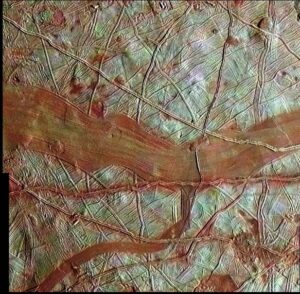
Water ice and salts on Europa. Credit: NASA/JPL-Caltech/SETI Institute
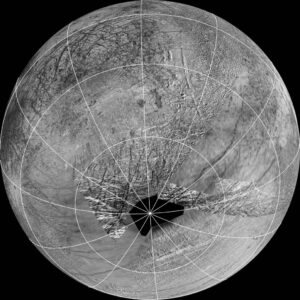
Source of water vapour plumes on Europa. Credit: NASA/ JPL-Caltech/ SETI Institute
(Jupiter: Solar System’s Giant)
Now a new study, published in September 2021, used past observations made by the Hubble Space Telescope in far-ultraviolet light of Jupiter’s icy moons to detect their oxygen atmospheres. The study, which used data from 1999 – 2015, highlights evidence that Europa has a water-vapour atmosphere above one hemisphere of the moon. This water vapour is spread over a larger area of Europa, indicating a long-term presence of a water vapor atmosphere. However, this vapour is present in only its orbital trailing hemisphere (the part of the moon always opposite to the direction of motion along its orbit). Recent results of a similar analysis – by the same scientist – of images and spectra of the moon Ganymede have shown that the same observations also contain information that water vapor is abundant in Ganymede’s atmosphere in addition to oxygen.
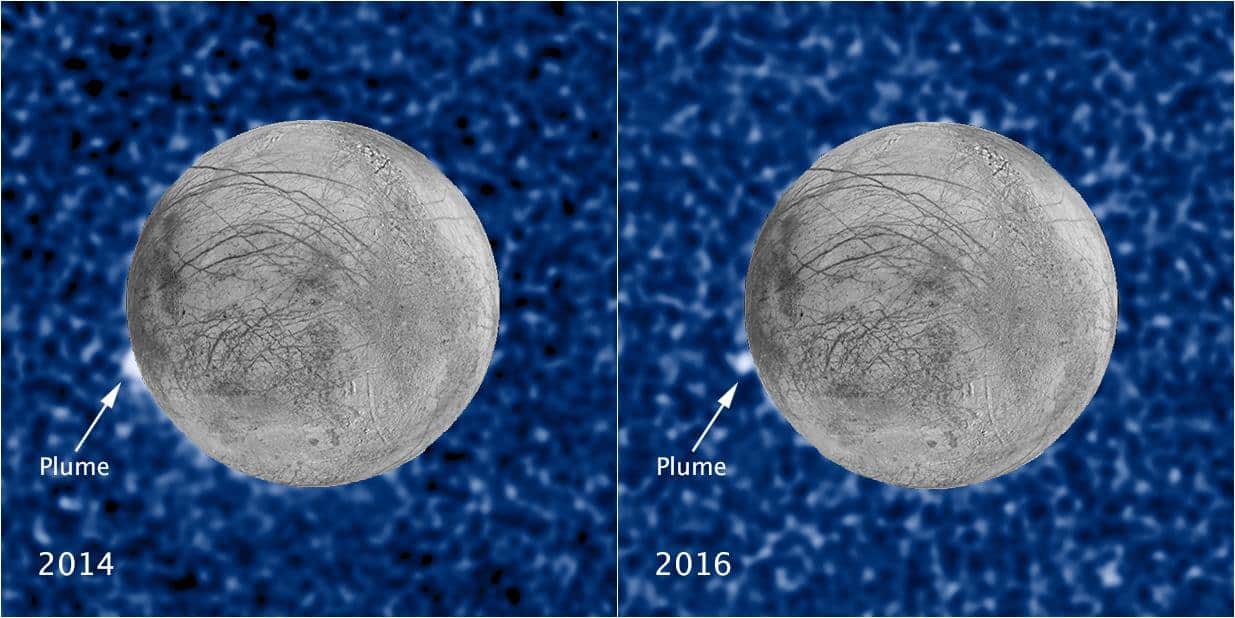
This composite image shows suspected plumes of water vapor erupting at the 7 o’clock position off the limb of Jupiter’s moon Europa. The plumes, photographed by NASA’s Hubble’s Space Telescope Imaging Spectrograph, were seen in silhouette as the moon passed in front of Jupiter. Hubble’s ultraviolet sensitivity allowed for the features — rising over 100 miles (160 kilometers) above Europa’s icy surface — to be discerned. The water is believed to come from a subsurface ocean on Europa. The Hubble data were taken on January 26, 2014. The image of Europa, superimposed on the Hubble data, is assembled from data from the Galileo and Voyager missions. Credits: NASA/ESA/W. Sparks (STScI)/USGS Astrogeology Science Center
Europa’s atmosphere is thought to be constantly replenished by the erosion of its water ice surface. Because its surface temperatures are cooler than Ganymede, finding presistant evidence of water-vapour in its atmosphere was surprising. Even though the daytime high on Europa is a freezing -260°F, even at this frigid temperature water ice is sublimating – that is, transforming directly from solid to vapor without a liquid phase – off Europa’s surface, just like on Ganymede, as per the new observations.
According to NASA, “To make this discovery, Roth delved into archival Hubble datasets, selecting ultraviolet observations of Europa from 1999, 2012, 2014 and 2015 while the moon was at various orbital positions. These observations were all taken with Hubble’s Space Telescope Imaging Spectrograph (STIS). The ultraviolet STIS observations allowed Roth to determine the abundance of oxygen – one of the constituents of water – in Europa’s atmosphere, and by interpreting the strength of emission at different wavelengths he was able to infer the presence of water vapor. This detection paves the way for in-depth studies of Europa by future probes including NASA’s Europa Clipper and the Jupiter Icy Moons Explorer mission from the European Space Agency (ESA). Understanding the formation and evolution of Jupiter and its moons also helps astronomers gain insights into Jupiter-like planets around other stars.”
The study emphasizes that the source of the water vapor can not unambiguously identified.
These results have been published in the journal Geophysical Research Letters.
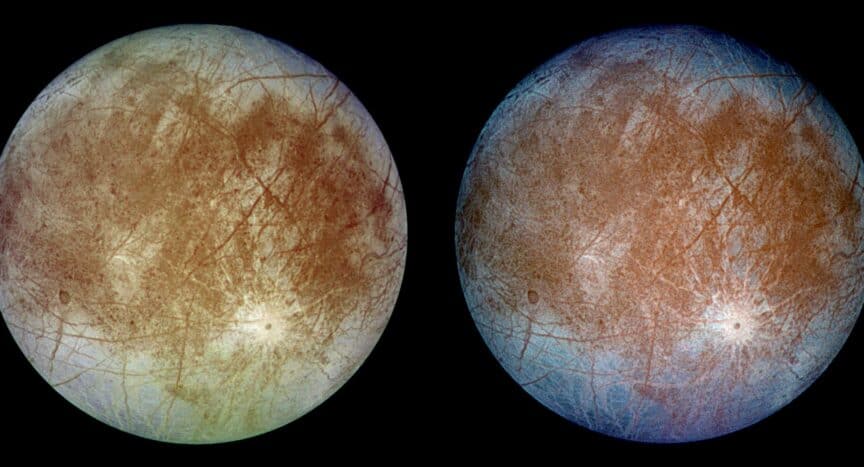
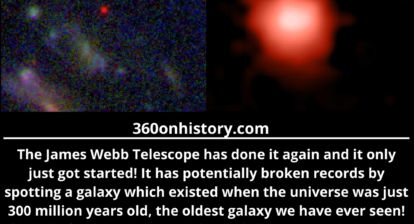

![The Great Dark Spot (top), Scooter (middle white cloud),[97] and the Small Dark Spot (bottom), with contrast exaggerated.](https://www.360onhistory.com/wp-content/uploads/2024/01/Neptune_storms-414x224.jpg)
